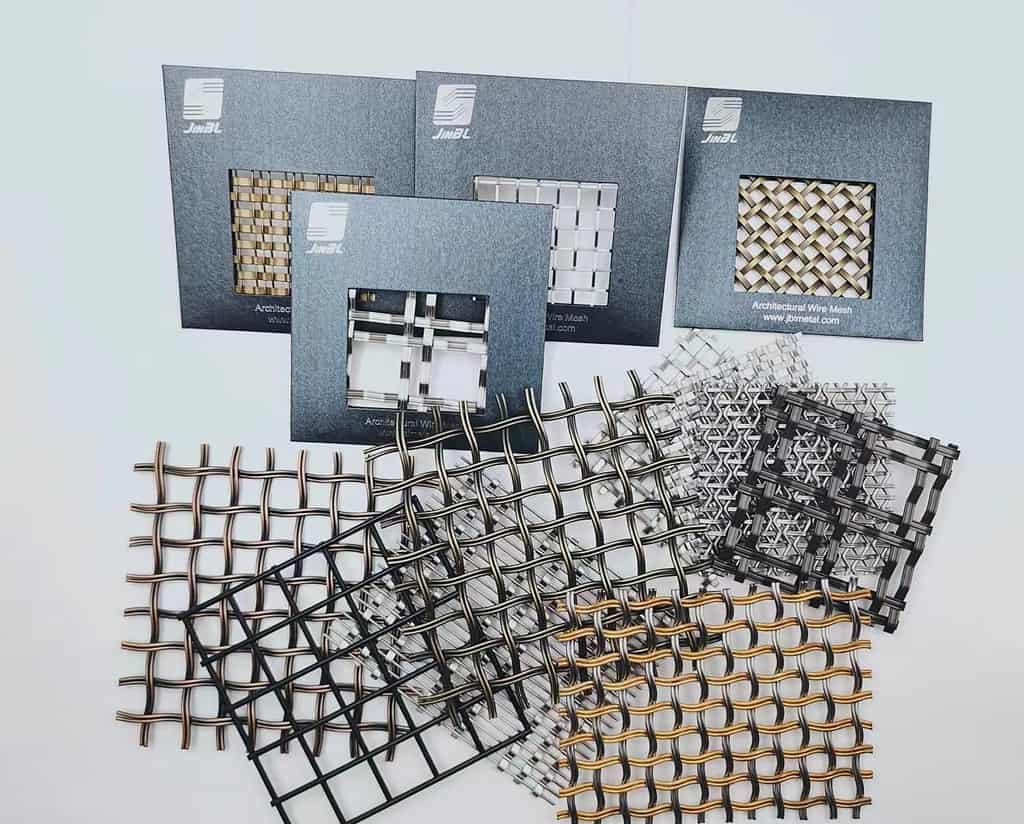Introduction
Brief explanation of metal architectural mesh
Importance of stair protection
A:Benefits of Using Metal Architectural Mesh for Stair Protection
1.Durability and Strength
2. High-quality materials used in manufacturing
3. Ability to withstand heavy foot traffic
B:Safety and Security
1. Preventing slips and falls
2. Acting as a barrier to prevent accidents
C:Design and Aesthetics
1. Enhancing the visual appeal of staircases
2. Various customization options available
D. Ventilation and Light Transmission 1
. Allowing air circulation
2. Maximizing natural light flow
Types of Metal Architectural Mesh for Stair Protection
A. Woven Wire Mesh
1. Interlocking wires for strength
2. Versatile design options
B. Expanded Metal Mesh
1. Durable and lightweight
2. Suitable for industrial applications
C. Perforated Metal Mesh
1. Provides visibility while maintaining security
2. Ideal for modern architectural designs
D. Wire Rope Mesh
1. Flexible and adaptable
2. Offers a unique aesthetic appeal
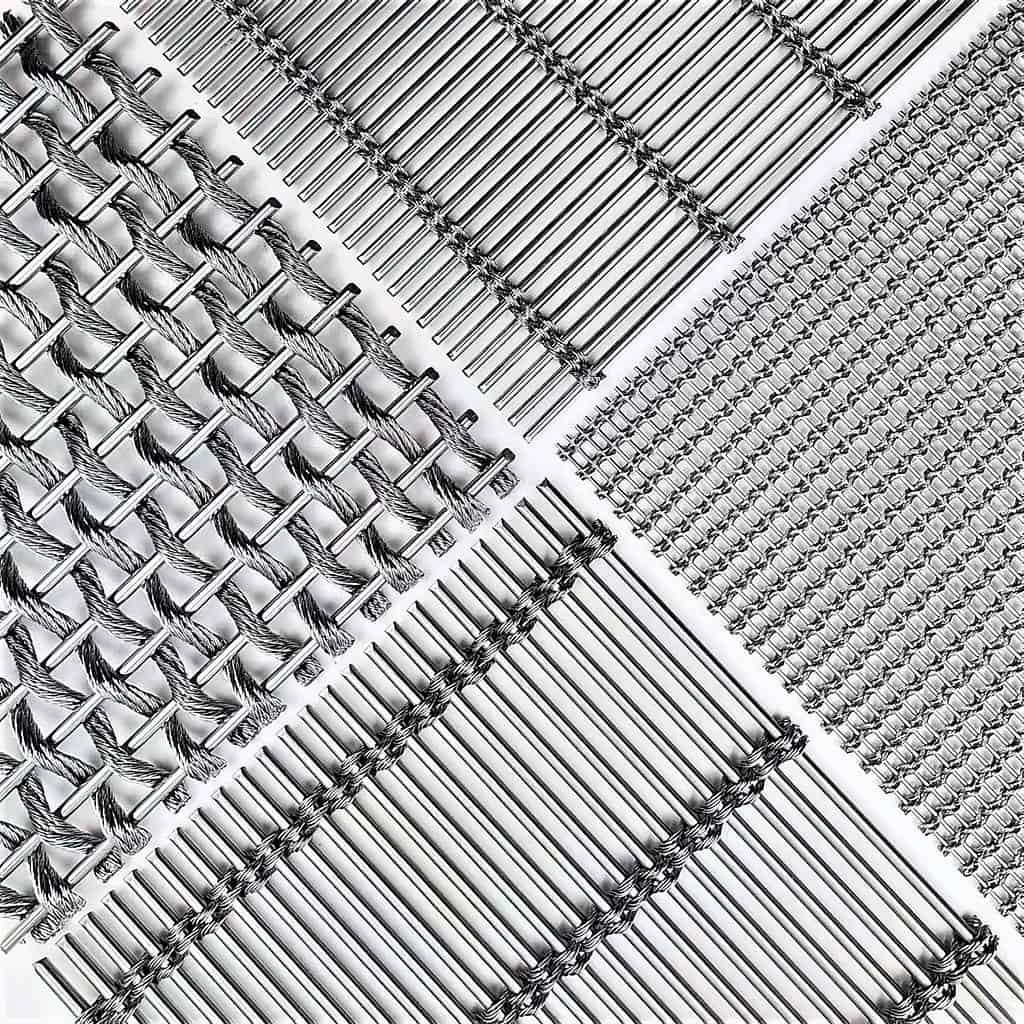
Installation and Maintenance of Metal Architectural Mesh
A. Professional Installation
1. Ensuring proper fit and alignment
2. Following manufacturer guidelines
B. Regular Maintenance
1. Cleaning and removing debris
2. Inspecting for damage or wear
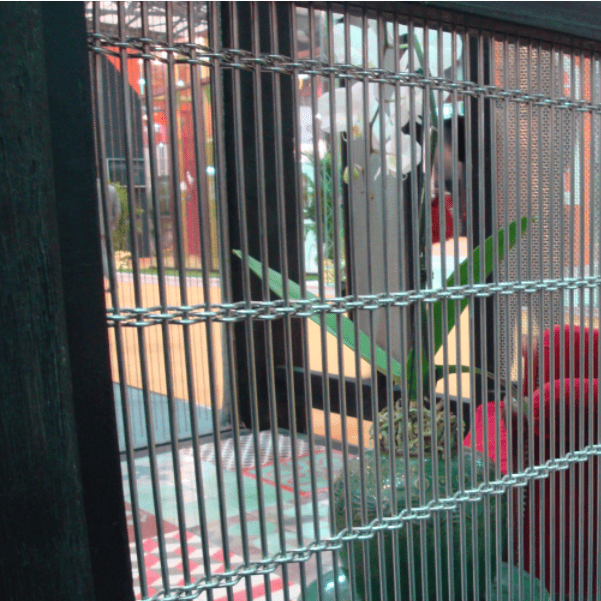
Applications of Metal Architectural Mesh for Stair Protection
A. Residential Buildings
1. Indoor and outdoor staircases
2. Balconies and railings
B. Commercial Buildings
1. Office complexes and hotels
2. Shopping malls and retail spaces
C. Public Spaces
1. Airports and transportation hubs
2. Museums and art galleries

Conclusion
Recap of the benefits and applications of metal architectural mesh for stair protection
FAQs
- Can metal architectural mesh be used for both indoor and outdoor staircases?
- How does metal architectural mesh enhance the safety of stairs?
- Can metal architectural mesh be customized to match the aesthetics of a building?
- Is professional installation necessary for metal architectural mesh?
- What maintenance is required for metal architectural mesh?
Metal Architectural Mesh Used for Stair Protection
Metal architectural mesh is a versatile and visually appealing material that finds extensive use in various architectural applications. When it comes to staircases, metal architectural mesh offers both practical and aesthetic benefits. In this article, we will explore the advantages of using metal architectural mesh for stair protection and delve into its different types, installation, maintenance, and applications.
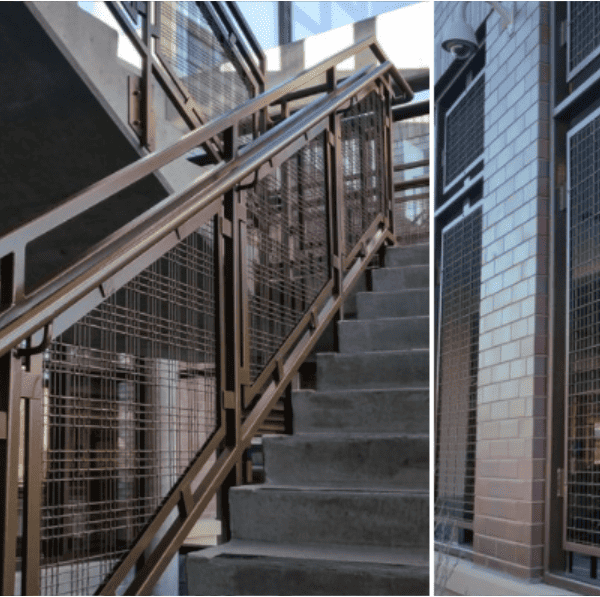
Benefits of Using Metal Architectural Mesh for Stair Protection
Metal architectural mesh provides numerous benefits when utilized for stair protection.
Durability and Strength
One of the key advantages of metal architectural mesh is its durability and strength. It is constructed using high-quality materials such as stainless steel, aluminum, or brass, ensuring its longevity even in high-traffic areas. The interlocking wires used in its fabrication make it robust enough to withstand heavy foot traffic, ensuring the safety of individuals using the stairs.
Safety and Security
Metal architectural mesh acts as an effective safety measure by preventing slips and falls on staircases. The mesh pattern offers a textured surface that enhances traction and reduces the risk of accidents. Additionally, it serves as a barrier, preventing people or objects from falling off the staircase, particularly in elevated areas. This feature is especially crucial for ensuring the safety of children, the elderly, and individuals with mobility challenges.
Design and Aesthetics
Apart from its functional aspects, metal architectural mesh significantly contributes to the visual appeal of staircases. It comes in various designs, weaves, and finishes, allowing for customization that can complement any architectural style. Whether it's a modern, industrial, or traditional setting, metal mesh can be tailored to enhance the overall aesthetics of the staircase, turning it into a focal point of the space.
Ventilation and Light Transmission
Metal architectural mesh offers excellent ventilation properties, allowing air circulation on the staircase. This airflow can be particularly beneficial in enclosed spaces, reducing stuffiness and improving comfort. Additionally, the mesh structure permits the transmission of natural light, effectively brightening up the staircase area and reducing the need for artificial lighting during the day.
Types of Metal Architectural Mesh for Stair Protection
Several types of metal architectural mesh are suitable for stair protection, each with its own unique characteristics and applications.
Woven Wire Mesh
Woven wire mesh is a popular choice for stair protection due to its strength and versatility. It is created by interweaving wires in an over-and-under pattern, resulting in a stable and durable mesh structure. The woven wire mesh can be customized in terms of wire diameter, aperture size, and weave style to suit specific requirements. This type of mesh is suitable for both indoor and outdoor staircases, offering a wide range of design options.
Expanded Metal Mesh
Expanded metal mesh is a lightweight and robust option for stair protection, making it ideal for industrial applications. It is created by slitting and stretching a solid metal sheet, resulting in a mesh with diamond-shaped openings. The process imparts strength and rigidity to the mesh while maintaining its lightweight properties. Expanded metal mesh is resistant to corrosion and offers high impact resistance, making it suitable for staircases in areas with heavy machinery or equipment.
Perforated Metal Mesh
Perforated metal mesh provides an excellent balance between security and visibility. It is created by punching or laser-cutting precise patterns of holes into a metal sheet, resulting in a mesh with evenly spaced perforations. Perforated metal mesh allows for good airflow, maintains security, and offers an aesthetic appeal. It is commonly used in modern architectural designs where transparency, light transmission, and a sleek appearance are desired.
Wire Rope Mesh
Wire rope mesh consists of stainless steel cables interwoven to form a flexible and adaptable mesh structure. This type of mesh offers a unique aesthetic appeal, providing a modern and contemporary look to staircases. The wire rope mesh is highly durable and resistant to environmental factors such as moisture and UV rays. It is an excellent choice for both interior and exterior staircases, providing a visually striking protective barrier.
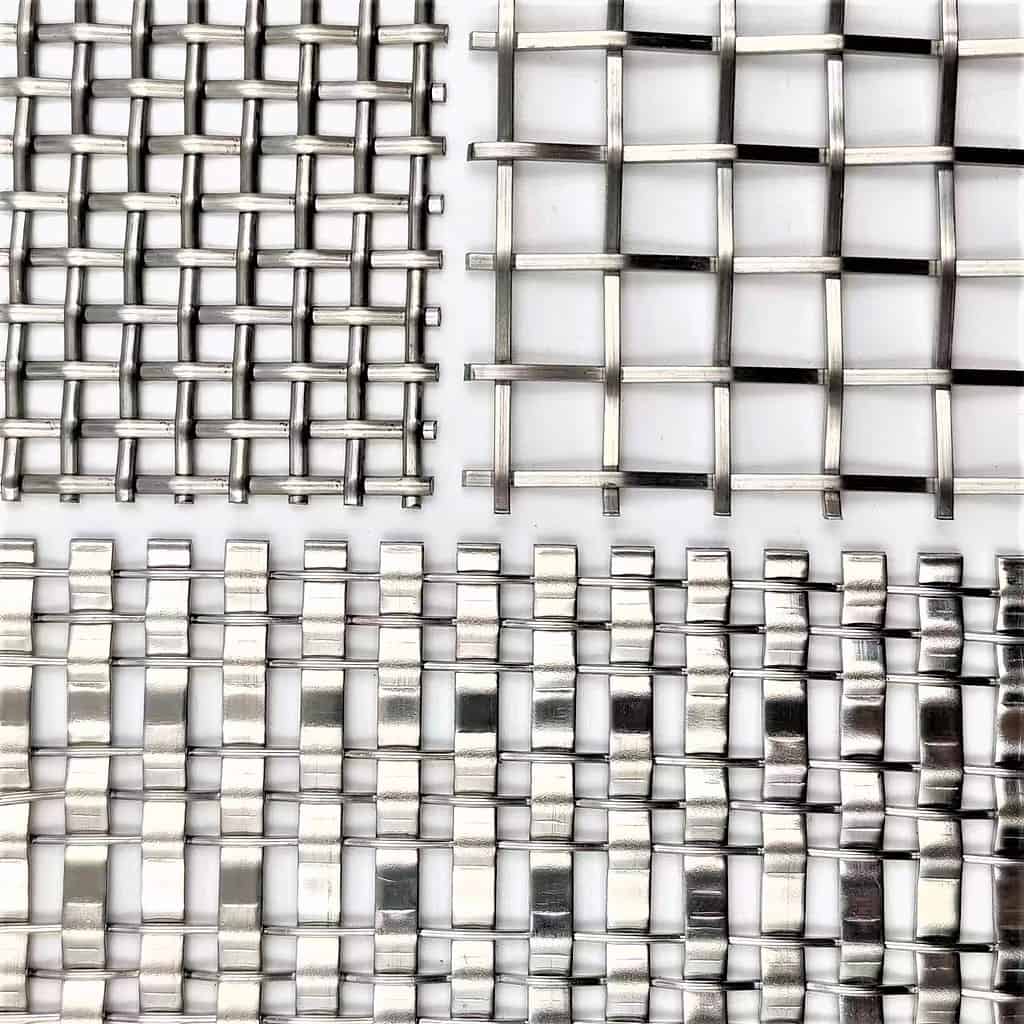
Installation and Maintenance of Metal Architectural Mesh
Proper installation and regular maintenance are essential for ensuring the effectiveness and longevity of metal architectural mesh on staircases.
Professional Installation
It is recommended to hire professionals experienced in working with metal architectural mesh for the installation process. They have the expertise to measure, cut, and install the mesh accurately, ensuring a proper fit and alignment with the staircase structure. Following the manufacturer's guidelines during installation is crucial to maximize the safety and durability of the mesh.
Regular Maintenance
To maintain the integrity and appearance of metal architectural mesh, regular maintenance is necessary. Cleaning the mesh periodically to remove dust, dirt, and debris is essential. This can be done using a soft brush or vacuum cleaner. Additionally, inspecting the mesh for any signs of damage or wear, such as loose wires or corrosion, is crucial. Any issues should be addressed promptly to prevent further deterioration and ensure the continued protection of the staircase.
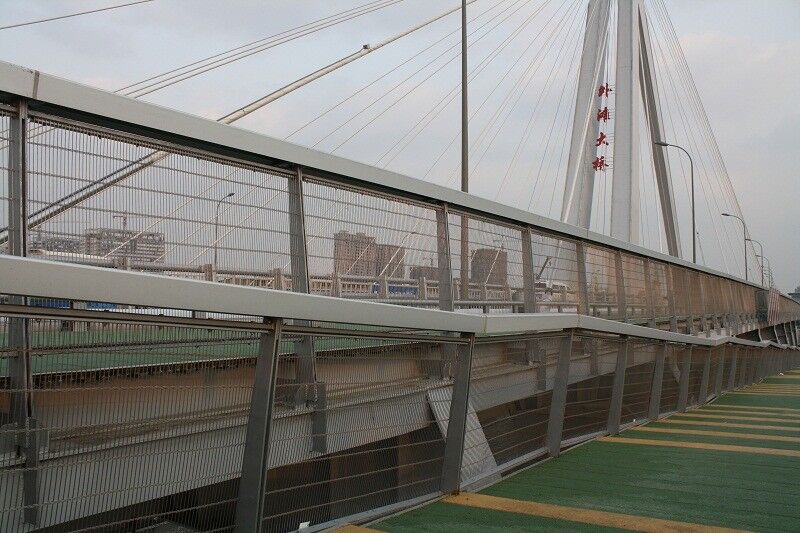
Applications of Metal Architectural Mesh for Stair Protection
Metal architectural mesh finds extensive applications for stair protection in various settings.
Residential Buildings
Metal architectural mesh can be used in both indoor and outdoor residential staircases. It offers an elegant and contemporary touch to homes, enhancing the overall aesthetic appeal. Additionally, it can be utilized for balconies and railings, providing a secure and visually appealing barrier.
Commercial Buildings
In commercial settings such as office complexes, hotels, and shopping malls, metal architectural mesh adds a touch of sophistication to staircases. It serves both functional and decorative purposes, ensuring the safety of occupants while creating a visually striking element in the building's design.
Public Spaces
Metal architectural mesh is widely used in public spaces like airports, transportation hubs, museums, and art galleries. It provides a safe and secure environment for individuals traversing staircases in these areas while adding an artistic flair to the overall architectural design.

Conclusion
Metal architectural mesh is a versatile and visually appealing solution for protecting staircases. Its durability, safety features, design options, and ventilation properties make it an ideal choice for both residential and commercial applications. By choosing the right type of mesh and ensuring professional installation and regular maintenance, staircases can be transformed into visually stunning and safe elements of architectural design.

FAQs
1. Can metal architectural mesh be used for both indoor and outdoor staircases?
Yes, metal architectural mesh can be used for both indoor and outdoor staircases. It is designed to withstand various weather conditions, making it suitable for any environment.
2. How does metal architectural mesh enhance the safety of stairs?
Metal architectural mesh provides a textured surface that enhances traction, reducing the risk of slips and falls on staircases. Additionally, it acts as a barrier, preventing people or objects from falling off elevated areas.
3. Can metal architectural mesh be customized to match the aesthetics of a building?
Yes, metal architectural mesh offers a wide range of customization options. It can be tailored in terms of design, weave style, wire diameter, and finish to match the aesthetics of any building or architectural style.
4. Is professional installation necessary for metal architectural mesh?
While it is possible to install metal architectural mesh on your own, professional installation is recommended. Experts have the knowledge and experience to ensure proper fit, alignment, and adherence to manufacturer guidelines, maximizing the effectiveness and longevity of the mesh.
5. What maintenance is required for metal architectural mesh?
Regular maintenance involves cleaning the mesh to remove dust, dirt, and debris, as well as inspecting for any signs of damage or wear. Promptly addressing any issues will help maintain the integrity and appearance of the metal architectural mesh.


